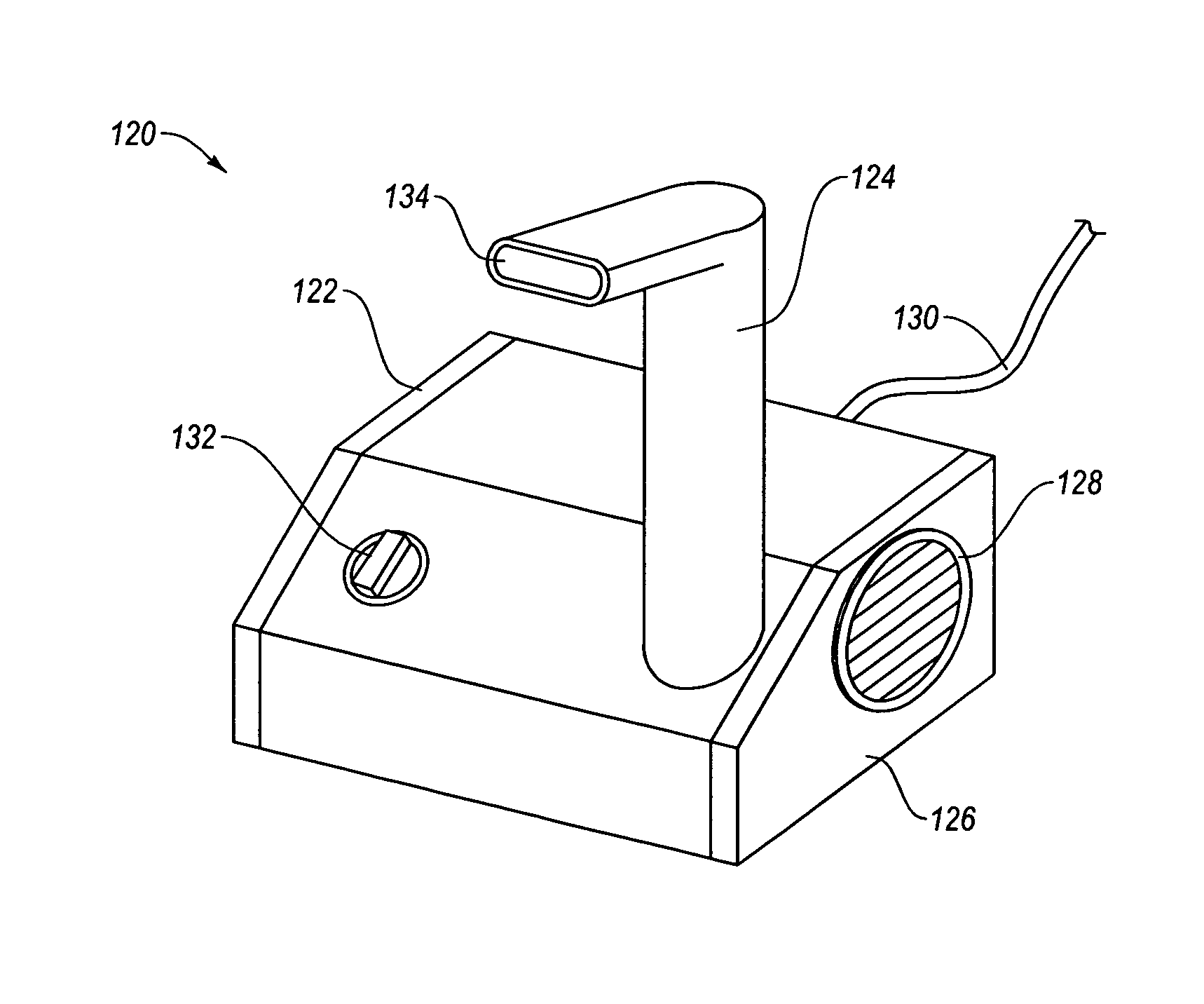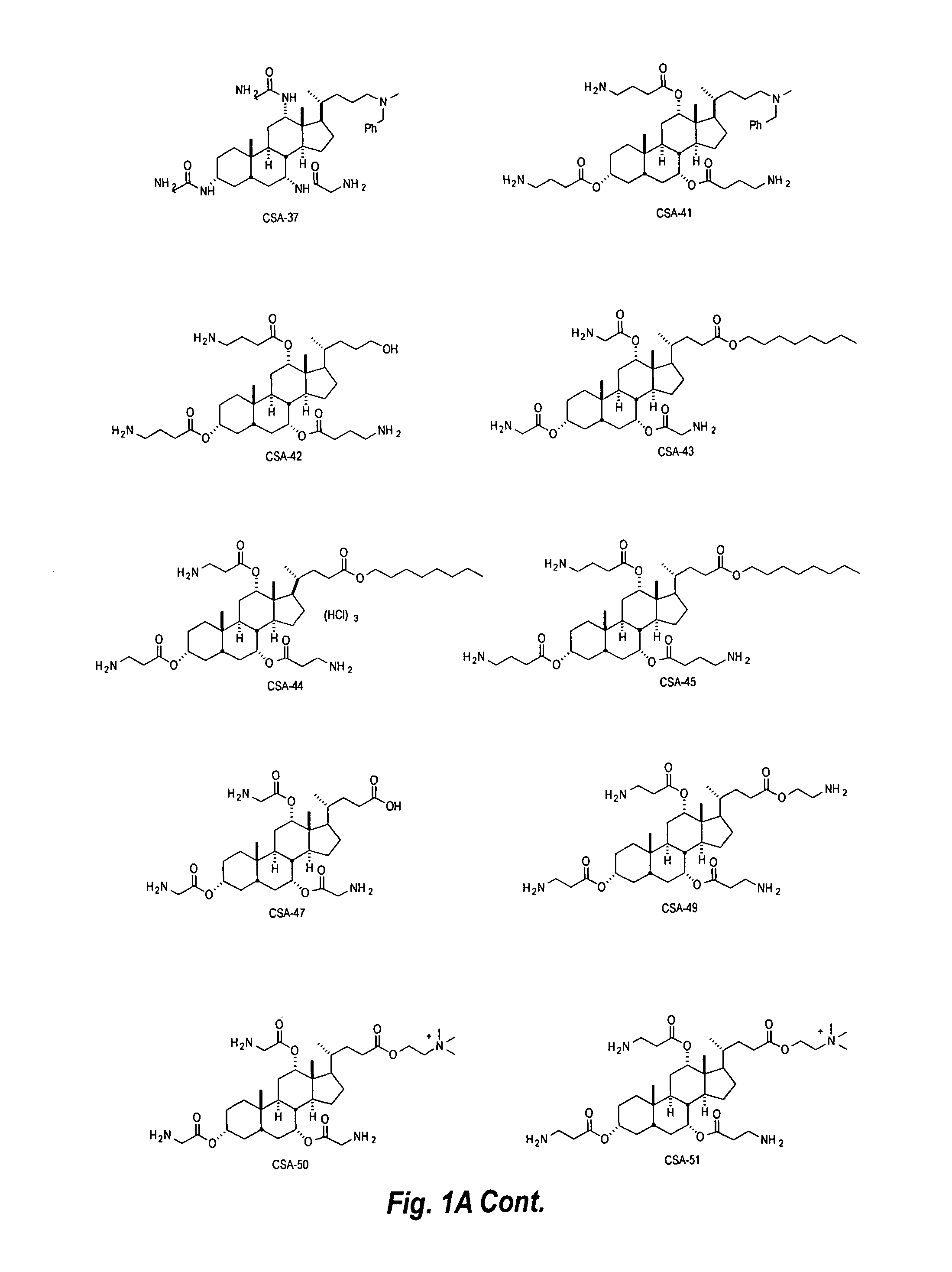Aerosols incorporating ceragenin compounds and methods of use thereof
a technology of ceragenin and ceragenin compounds, which is applied in the field of aerosols incorporating ceragenin compounds, can solve the problems of affecting the health of microorganisms on a variety of surfaces and in the air, illness, irritation,
- Summary
- Abstract
- Description
- Claims
- Application Information
AI Technical Summary
Benefits of technology
Problems solved by technology
Method used
Image
Examples
Embodiment Construction
I. Introduction
[0020]Ceragenin compounds, also referred to herein as cationic steroidal anti-microbial compounds (CSAs), are synthetically produced small molecule chemical compounds that include a sterol backbone having various charged groups (e.g., amine and cationic groups) attached to the backbone. The backbone can be used to orient the amine or guanidine groups on one face, or plane, of the sterol backbone. For example, a scheme showing a compound having primary amino groups on one face, or plane, of a backbone is shown below in Scheme I:
[0021]
[0022]Ceragenins are cationic and amphiphilic, based upon the functional groups attached to the backbone. They are facially amphiphilic with a hydrophobic face and a polycationic face. Without wishing to be bound to any particular theory, the anti-microbial ceragenin compounds described herein act as anti-microbial agents (e.g., anti-bacterials, anti-fungals, and anti-virals). It is believed, for example, that the anti-microbial ceragenin ...
PUM
| Property | Measurement | Unit |
|---|---|---|
| size | aaaaa | aaaaa |
| time | aaaaa | aaaaa |
| size | aaaaa | aaaaa |
Abstract
Description
Claims
Application Information
 Login to View More
Login to View More - R&D
- Intellectual Property
- Life Sciences
- Materials
- Tech Scout
- Unparalleled Data Quality
- Higher Quality Content
- 60% Fewer Hallucinations
Browse by: Latest US Patents, China's latest patents, Technical Efficacy Thesaurus, Application Domain, Technology Topic, Popular Technical Reports.
© 2025 PatSnap. All rights reserved.Legal|Privacy policy|Modern Slavery Act Transparency Statement|Sitemap|About US| Contact US: help@patsnap.com



